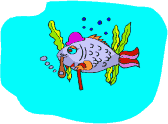 |
See Zeiner's new online
catalog. New items are being added regularly. |
Click here for Zeiners new secure online catalog
Submitted by Ned Kehde - July 29, 2002
In April, Morone chryspos is the mantra of a growing contingent
of
fishermen hereabouts. In fact, some of these anglers begin their
invocations
in March and continue it past the first week of May. The gist
of all these
quests are centered on the search for copious numbers of white
bass that are
on the verge of their yearly procreation antics. Morone chryspos,
of course,
is the scientific name of these anglers' quarry.
Back in the springs of the 1960s and into the mid-1980s, small
scatterings
of anglers pursued white bass in the riffles and pools of the
Neosho River
above John Redmond Lake or at similar spots above other eastern
Kansas
reservoirs. These anglers intercepted the white bass during their
migration
to and from the riffles where they spawned.
Leonard Jirak, fisheries biologist for the Kansas Wildlife
and Parks, says
the bountiful white bass runs to the Neosho spawning riffles
are virtually a
thing of the past. Siltation is the culprit, according to Jirak,
that caused
the demise of the white bass at Redmond.
And during the past three Aprils, a cadre of astute anglers
has
discovered that the riverine spawn above other area reservoirs
hasn't been
as bountiful as it used to be. It was once a simple task for
two talented
anglers to catch and release a 100 white bass in four hours of
fishing.
Nowadays two anglers can occasionally tangle with 80 white bass
on the best
of outings, but on most treks they struggle to catch 40.
Moreover, the duration of the spawning run seems to be shorter
than it
used to be. In Aprils past, anglers could intercept nearly continuous
waves
of fish has they headed to and returned from their reproductive
rituals. Now
there are only a couple waves of white bass running the rivers.
Some
anglers suspect that the aftereffects of the floods and silt
that ravaged
the waterways of eastern Kansas during the 1990s might be one
reason why the
spawning activities of the white bass have declined in the rivers.
In addition, Jirak postulated that this year's drought lowered
the
water levels in the rivers that feed several of the reservoirs
to the point
that it inhibited some of the white bass from making their annual
river run
this April. For example, the water flow into Melvern and Pomona
lakes on
April 1 registered only seven cubic feet per second.
On top of the drought and silt, this year's spawning run was
adversely
affected by a series of cold fronts that waylaid northeastern
Kansas in
March and early April.
Thus on several early spring outings, the river fishing proved
to be
difficult
For instance, my nephew, Roger Kehde, and my brother, John,
both superb
white bass fishermen from Sedalia, Mo., joined me for a foray
up the
Wakarusa River above Clinton Lake on April l on our family's
traditional
post-Easter fishing expedition.
On this exceedingly warm and windy day, the Wakarusa's water
temperature
ranged from 53 degrees to 58 degrees; a perfect temperature for
egging
scores of white bass to wander upstream towards their spawning
grounds. But
at the upstream riffles, the river flowed at the languid and
unseducive pace
of 25 c.p.s..
In years past, we have caught and released more than 200 white
bass on
these river excursions. This year, however, we could entice only
40 of
them to engulf ours jigs and plastic grubs.
Yet despite all the problematic conditions, Calvin Page, a
veteran white
bass angler from Holton, occasionally found the white bass fishing
in the
Delaware River above Perry Lake to be more fruitful this spring
than it was
in 2001. On April 1, Page worked a Delaware riffle, which flowed
at 65
c.p.s., and caught 60 male white bass by employing a jig and
plastic grub,
but in the midst of a wicked and windy cold front on April 2,
he caught only
27.
Since the slow flow in the rivers failed to allure vast numbers
of white
bass out of the reservoirs in early April, Jirak and many eastern
Kansas
white bass fisherman anticipate that the best fishing this spring
will occur
in late April and early May as the white bass spawn on the rocky
shorelines
of the reservoirs' main bodies. And amongst the lustful gatherings
at
Milford and Pomona lakes, some anglers might enjoy an encounter
with a
humongous wiper or two, which could cause them to change their
mantra to
Morone saxatilis x Morone chrysop.
Back to
Ned Kehde Index | Kansas
Angler Home | Anglers Sharing Stories
|


